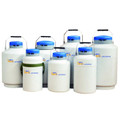 Loading... Please wait...
Loading... Please wait...- Home
- Disease Area
- Neuroscience
- 7,8-Dihydroxyflavone
- Home
- Molecular Target
- Tyrosine Kinase
- 7,8-Dihydroxyflavone
Product Description
7,8-Dihydroxyflavone binds to the extracellular domain of tyrosine kinase receptor B (Kd = 320 nM) and activate the receptor activity. It inhibits glutamate-triggered apoptosis in hippocampal neurons in vitro and in vivo. Administration of 7,8-dihydroxyflavone to mice activated TrkB in the brain, inhibited kainic acid-induced toxicity, decreased infarct volumes in stroke in a TrkB-dependent manner, and was neuroprotective in an animal model of Parkinson disease. It also reverses memory deficits and BACE1 elevation in a mouse model of Alzheimer's Disease.
Technical information:
| Chemical Formula: | C15H10O4 | |
| CAS #: | 38183-03-8 | |
| Molecular Weight: | 254.24 | |
| Purity: | >98% | |
| Appearance: | White solid | |
| Chemical Name: | 7,8-dihydroxy-2-phenyl-4H-chromen-4-one | |
| Solubility: | Up to 100 mM in DMSO |
Shipping Condition: The product is shipped in a glass vial at ambient temperature.
Storage: For longer shelf life, store solid powder at 4oC desiccated, or store DMSO solution at -20oC.
Reference:
| 1. | Sung-Wuk Jang et al. A selective TrkB agonist with potent neurotrophic activities by 7,8-dihydroxyflavone. Proc.Natl.Acad.Sci.USA. 2010; 107 268. |
| 2. | Latha Devi et al. 7,8-Dihydroxyflavone, a Small-Molecule TrkB Agonist, Reverses Memory Deficits and BACE1 Elevation in a Mouse Model of Alzheimer's Disease. Neuropsychopharmacology advance online publication 7 September 2011. |
| 3. | Zhang R et al. Preventive effect of 7,8-dihydroxyflavone against oxidative stress induced genotoxicity. Biol Pharm Bull. 2009;32(2):166-71 |
| 4. | Raul Andero et al. Effect of 7,8-Dihydroxyflavone, a Small-Molecule TrkB Agonist, on Emotional Learning. Am J Psychiatry 2011; 168:163-172. |
Other Information:
Product Specification (pdf)
MSDS (pdf)









